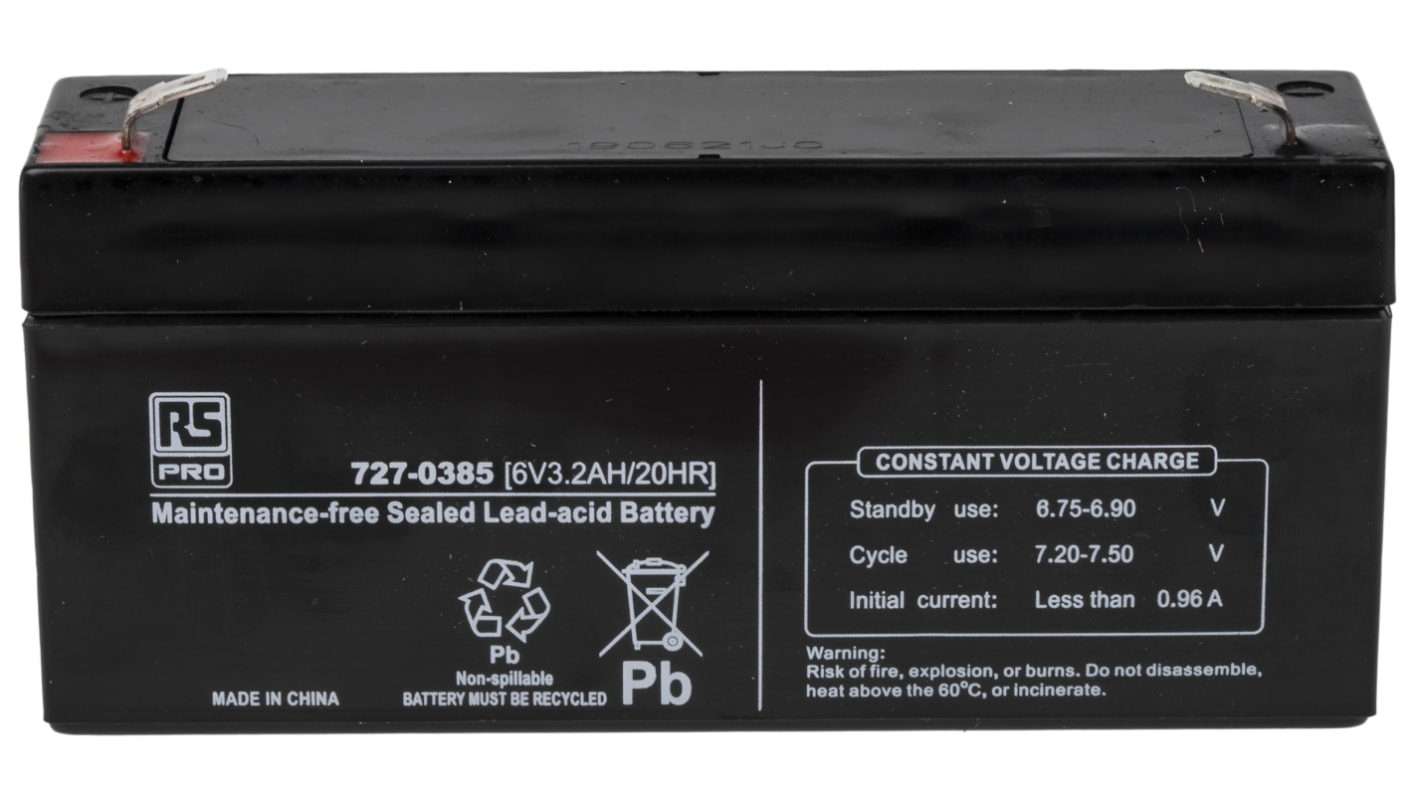RS PRO 6V T1 Sealed Lead Acid Battery, 3.2Ah
- RS Stock No.:
- 727-0385
- Manufacturer:
- RS PRO
Bulk discount available
Subtotal (1 unit)**
TWD157.00
(exc. GST)
TWD164.85
(inc. GST)
740 In stock for delivery within 6 working days*
* Delivery dates may change based on your chosen quantity and delivery address.
FREE delivery for orders over TWD2,857.00 (ex VAT)
Units | Per unit |
|---|---|
| 1 - 19 | TWD157.00 |
| 20 - 99 | TWD153.00 |
| 100 + | TWD143.00 |
**price indicative
- RS Stock No.:
- 727-0385
- Manufacturer:
- RS PRO
Find similar products by selecting one or more attributes.
Select all | Attribute | Value |
|---|---|---|
| Manufacturer | RS PRO | |
| Capacity | 3.2Ah | |
| Nominal Voltage | 6V | |
| Construction | AGM | |
| Terminal Type | T1 | |
| Flame Resistant | No | |
| Dimensions | 134 x 34 x 60mm | |
| Maximum Operating Temperature | + 50°C | |
| Minimum Operating Temperature | - 20°C | |
| Designed for Cyclic Application | No | |
| Application | Stand by Use | |
| Designed High Rate Application | No | |
| Chemistry | Lead Acid | |
| Eurobat Classification | 3 to 5 Years | |
| Operating Temperature Range | -20 → +50°C | |
| Brand Range | RS PRO | |
| Weight | 670g | |
Select all | ||
|---|---|---|
Manufacturer RS PRO | ||
Capacity 3.2Ah | ||
Nominal Voltage 6V | ||
Construction AGM | ||
Terminal Type T1 | ||
Flame Resistant No | ||
Dimensions 134 x 34 x 60mm | ||
Maximum Operating Temperature + 50°C | ||
Minimum Operating Temperature - 20°C | ||
Designed for Cyclic Application No | ||
Application Stand by Use | ||
Designed High Rate Application No | ||
Chemistry Lead Acid | ||
Eurobat Classification 3 to 5 Years | ||
Operating Temperature Range -20 → +50°C | ||
Brand Range RS PRO | ||
Weight 670g | ||

